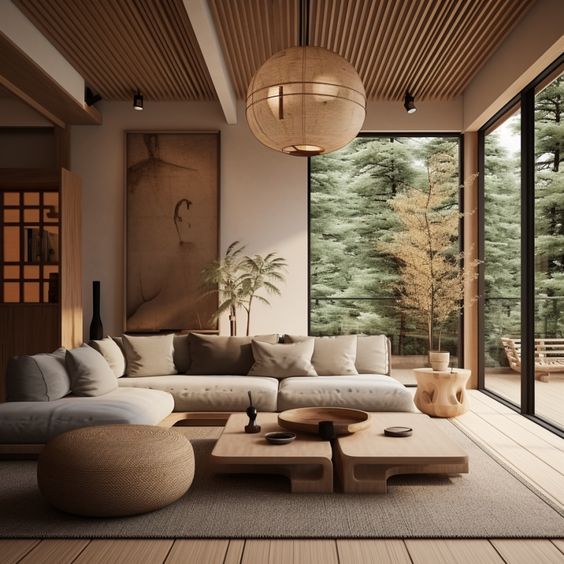
Japandi Style: Everything You Need to Know About
Japandi style is a minimalist, multi-cultural interior design trend that combines the best of Japanese and Scandinavian aesthetics. It is a fusion of simplicity, functionality, natural elements, and comfort. If you are looking for a way to create a cozy, serene, and elegant space in your home, Japandi style might be the perfect choice for you. Here are some key features and tips on how to achieve this look.
Neutral Colors
One of the main characteristics of Japandi style is the use of neutral colors, especially earthy tones. Think of beige, gray, white, black, and brown as the base of your palette. These colors create a calm and harmonious atmosphere, as well as a contrast between the light and dark elements. You can also add some pops of color, such as green, blue, or pink, but make sure they are subtle and muted, not bright or flashy.
Natural Materials
Another essential element of Japandi style is the use of natural materials, such as wood, bamboo, rattan, linen, cotton, and wool. These materials add warmth, texture, and organic beauty to your space. They also reflect the respect and appreciation for nature that both Japanese and Scandinavian cultures share. You can incorporate natural materials in your furniture, flooring, rugs, curtains, pillows, and accessories.
Minimalist Furniture
Japandi style is all about minimalism and functionality. That means choosing furniture that is simple, sleek, and practical. Avoid clutter and excess, and opt for pieces that have clean lines, smooth surfaces, and geometric shapes. You can mix and match Japanese and Scandinavian furniture styles, such as low tables, tatami mats, futons, chairs, stools, and shelves. The key is to create a balance between the rustic and the refined, the cozy and the elegant.
Craftsmanship and Quality
Japandi style also emphasizes craftsmanship and quality, rather than mass production and cheap materials. Both Japanese and Scandinavian design traditions value the skill and artistry of making things by hand, with attention to detail and durability. You can showcase the craftsmanship and quality of your furniture and accessories by choosing pieces that have visible joints, knots, grains, or stitches. You can also look for handmade or vintage items that have a unique character and history.
Wabi-Sabi and Hygge
Finally, Japandi style is influenced by two philosophical concepts: wabi-sabi and hygge. Wabi-sabi is a Japanese term that means finding beauty in imperfection, simplicity, and authenticity. Hygge is a Danish word that means creating a cozy and comfortable environment that promotes well-being and happiness. Together, these concepts inspire you to embrace your space as it is, with its flaws and quirks, and to make it a place where you can relax, enjoy, and feel at home.
